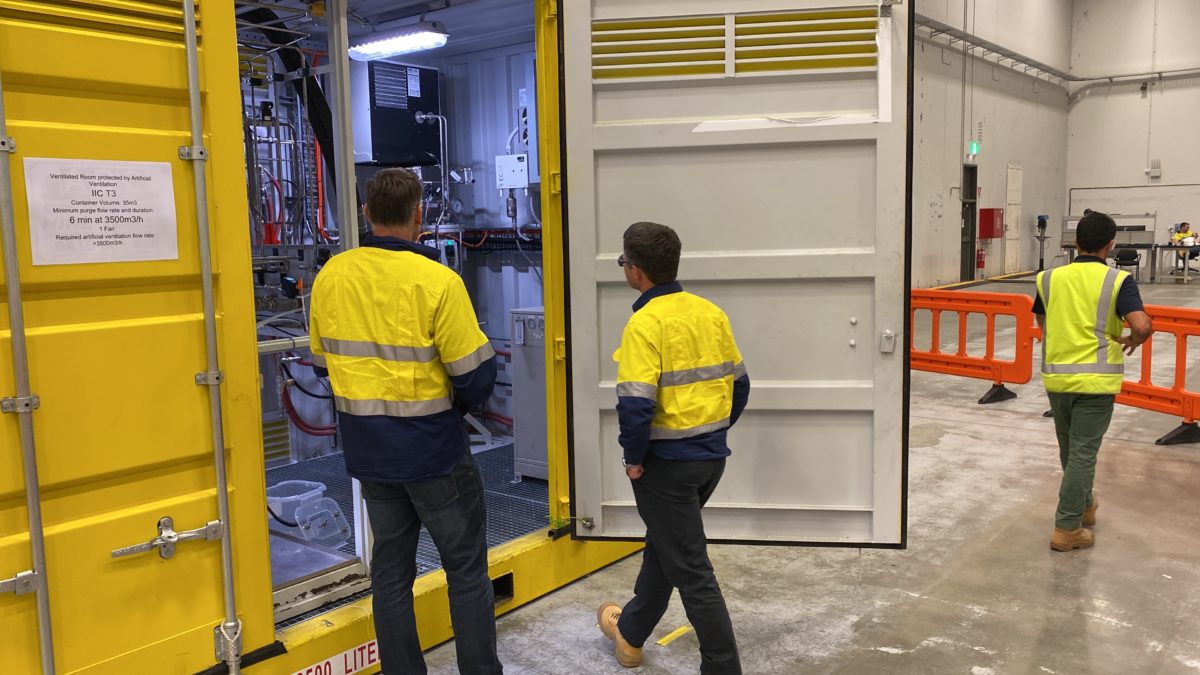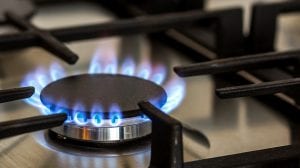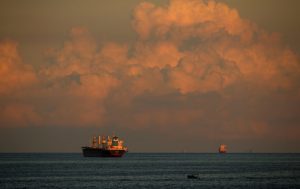Fortescue Future Industries says it plans to begin production of Australian made hydrogen electrolysers at its new Gladstone factory in Queensland this year after delivering its first in-house prototype.
FFI, the green energy arm of Andrew Forrest’s iron ore giant, says it has completed construction of the Gladstone electrolyser manufacturing facility – Australia’s first – and is currently fitting out the automated production line.
FFI chief executive Mark Hutchinson says the facility was built on time and under budget, and is now looking at using its own Australian-made PEM (polymer electrolyte membrane) technology following the collapse of a deal with US-based Plug Power last year.
“We’ve also successfully completed to build our first PEM prototype,” Hutchinson told an analysts briefing after the release of Fortescue Metals quarterly production report.
“This is no small feat, as we are the first in Australia do anything like we remain firmly on track to produce Queensland made FFI electrolyzers this year.”
Hutchinson re-iterated that FFI has at least five major hydrogen projects across the world that could reach financial investment decisions (FID) by the end of 2023.
These include two in the US – in Arkansas and Texas – that will look to supply green hydrogen for heavy transport, one in Kenya looking at green ammonia for local fertiliser use, one in Brazil looking at green ammonia for export, and another in Norway looking to export green ammonia to Europe.
There is also a proposal to convert an existing gas-fed ammonia facility at Gibson Island near Brisbane into a renewables-fed green ammonia facility, also likely for export to Asia.
Hutchinson repeated his plea for the Australian government to step and seek to match at least some of the incentives and support mechanisms unveiled by the US government in its Inflation Reduction Act, and which are being match by the EU and governments elsewhere.
“As a business, we really have to focus our attention on both markets and make the most commercial places where renewable power is available and affordable,” Hutchinson said.
“Places where incentives exist for local manufacture and green energy production. Places where off-take agreements both domestic and export, are ready and waiting to be signed.
“There is an opportunity to countries like Australia to not only compete, but to play a leading role in the green energy transformation if the policy settings are right.
“We need to move fast, we have seen policy responses to the US Ira from around the world including Europe, Canada, the Gulf States, India, and others announcing their own funding commitments.
“The Australian government can help to create a level playing field between fossil fuels and green energy, an IRA equivalent here would help to relieve Australia’s competitive advantage in green energy production.”
As for FFI’s own electrolyser technology, Hutchinson didn’t reveal much, apart from saying it was developed in house, and would be a key part of the Gladstone facility.
“This is kind of a new world, right?” Hutchinson said.
“The technology’s been around for a long time, but that really this has never been done at scale.
“So we, as an industry, have enormous amount to learn over the next few years as we ramp this up at scale and the technology I think, will develop very, very fast over the next few years. So we’re just going to be part of that race.”
Hutchinson said that the Gladstone production facility still aimed to produce 2GW of electrolyser capacity a year, and would supply projects the company is planning in Australia but also internationally.
“It doesn’t mean that we won’t be buying off others,” he said. “Our need is going to be enormous globally. So we have retained great relationships with all the suppliers around the world actually and we’ll be dealing with with different suppliers in different different situations around the world.
“But as far as our own technology goes, the technology is advancing very well. We will be production this year. We certainly won’t be the whole big two gigawatts, but we will ramp up over the next couple of years.”









